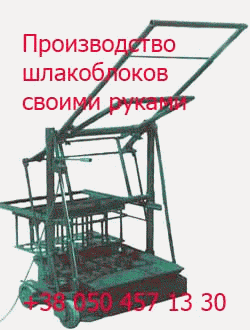5.8.1 One-Part Silicone Adhesives One-part silicone adhesives are known as RTV-1 adhesives (RTV = room temperature vulcanizing). They contain a polyorgano-siloxane with terminal — OH groups, and a crosslinking agent (e. g. methyl triacetoxy silane) which is sensitive to hydrolysis — that is, it reacts with water. When the silicone is applied, the crosslinking agent […]
Архивы рубрики ‘Adhesive Bonding’
Formulations of Cyanoacrylate Adhesives
 24 сентября, 2015
24 сентября, 2015  Pokraskin
Pokraskin Methyl esters of cyanacrylic acid are used to generate fast-curing, high-strength cyanoacrylate adhesives for metals, while ethyl esters are used to generate adhesives for metals and plastic materials. In order to overcome problems with the odor ofthese two monomers, higher esters are employed. but these lead to the generation of adhesives with lower strengths and […]
Formulations of UV-Setting Acrylate Adhesives
 24 сентября, 2015
24 сентября, 2015  Pokraskin
Pokraskin The formulations of UV-setting acrylate adhesives are similar to those discussed above, except that a photoinitiator is responsible for the curing process. Under the influence of UV radiation, the photoinitiator generates radicals that initiate the polymerization. The resin to be cured contains reactive monomers or oligomers that are based, for example, on urethane, as well […]
Formulation of a Two-Part Acrylate ‘No Mix’ Adhesive
 24 сентября, 2015
24 сентября, 2015  Pokraskin
Pokraskin A typical formulation ofa two-part acrylate ‘no mix’ adhesive (also known as a ‘hardener lacquer system’) with good thixotropic properties and excellent impact toughness comprises, in the resin component, 45% methyl methacrylate, 8% methacrylic acid, 1% dimethyl acrylate (e. g. ethylene glycol dimethacrylate), 45% toughening polymer (e. g. chlorosulfonated polyethylene), and 0.5% peroxide (e. g. […]
Formulations of Acrylate Adhesives
 24 сентября, 2015
24 сентября, 2015  Pokraskin
Pokraskin Formulations of acrylate adhesives are mainly based on MMA, which is generally copolymerized with methacrylic acid or acrylic acid. These polar components make it possible to improve not only the adherence of the adhesives on many surfaces, but also their thermal resistance. Problems arising with objectionable odors can be overcome by the use of acrylate […]
Cyanoacrylate Adhesives
 23 сентября, 2015
23 сентября, 2015  Pokraskin
Pokraskin In the case of cyanoacrylate adhesives, which are known as ‘Super glues’, curing is initiated by the moisture adsorbed onto the adherents and takes place within the bond-line within a few seconds or minutes. Although cyanoacrylates are easy to process, they cannot overcome gaps which have a width in excess of 0.1 mm. These materials […]
UV-Setting Acrylates
 23 сентября, 2015
23 сентября, 2015  Pokraskin
Pokraskin UV-setting acrylate adhesives are also radically initiated systems. In contrast to other adhesive systems, they have an extremely high curing rate that is generally on the order of a second or a millisecond [40,41]. UV-setting acrylate adhesives are therefore extremely well suited for bonding purposes in the production ofhigh-precision, high — quality goods manufactured in […]
Anaerobic Acrylates
 23 сентября, 2015
23 сентября, 2015  Pokraskin
Pokraskin Anaerobic adhesives have been available commercially since 1953, the first anaerobic adhesive based on dimethacrylate having been developed that year by Vernon Krieble, in the United States. This was commercialized under the name Loctite [40] and, indeed, the early success of the Loctite Company — which today is the leading manufacturer of acrylate adhesives — […]
Examples of Application
 23 сентября, 2015
23 сентября, 2015  Pokraskin
Pokraskin One-part and two-part adhesives are used mainly for structural bonding as they have a very good adherence to metals, glass and plastic materials, a high tolerance to slightly contaminated and oiled surfaces, and a relatively short curing time compared to epoxy resin-based or polyurethane-based reactive adhesives. Some typical applications are listed in Table 5.6. MMA-based […]
One-Part Acrylates/Methacrylates
 23 сентября, 2015
23 сентября, 2015  Pokraskin
Pokraskin With one-part acrylate/methacrylate adhesives, the reaction is initiated by peroxides, as in the case of two-part systems. Since, with one-part adhesives, the peroxides do not decompose under the influence of the hardener but rather under the effect of temperature, the storage stability and desired reaction time must be aligned with each other. In order to […]
 Опубликовано в рубрике
Опубликовано в рубрике 
